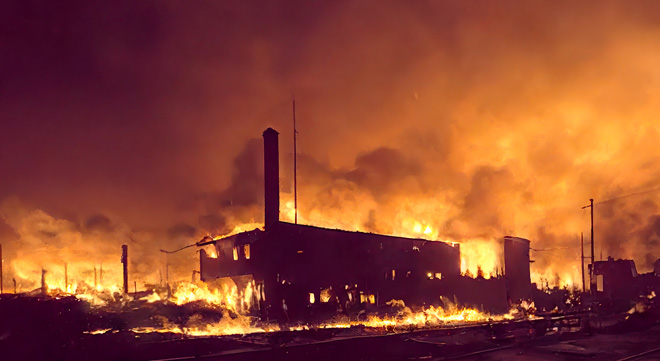Fire and explosion consistently rank among the top 10 global business risks in South Africa, highlighting the critical importance of ensuring that homes and businesses are fully protected against this threat.
The 13th Allianz Risk Barometer, released earlier this year, ranked fire and explosion as the eighth top business risk in South Africa. When Geoff Tanton, head of property and mid-corporate at Allianz Commercial, discussed the top risks in a webinar, he said that fires, while typically well managed, still cause major business interruptions and supply chain disruptions, particularly when critical components are concentrated among a few key suppliers. Recovering from fires often takes longer than other perils and includes the risk of losing clients due to business interruption.
In South Africa, ageing infrastructure exacerbates fire risks because of ineffective municipal water supply and fire services. Additionally, the widespread adoption of solar energy has increased the risk of fires from the use and storage of lithium-ion batteries.
Read: Corporates brace for impact: navigating SA’s top 10 business risks
Thabo Twalo, the chief underwriting officer at Santam Broker Solutions, says the increased risk of fire in winter is borne out by insurance statistics. Fire-related property insurance claims rise sharply during the colder months as people take steps to warm offices and buildings. It is therefore important to ensure that homes and businesses are fully protected against this risk.
With this in mind, Santam, South Africa’s largest short-term insurer, says the first priority for business owners is to check that their commercial insurance policies adequately protect their business and assets against fire damage and associated costs.
“Covering the cost of fire damage without insurance can be financially devastating for anyone and any business. Flames, smoke, and the water used to extinguish a fire can severely damage buildings, assets, and belongings. If you are not adequately insured, you may not be able to rebuild, repair or replace assets,” says Twalo.
The second priority is to ensure that the business follows effective risk management and prevention procedures, taking adequate measures to minimise the risk of fire.
“It’s important to be proactive in taking precautions to prevent fires from breaking out in the first place and, if they do break out, be able to extinguish them while they are still small and manageable,” he says.
Santam lists the following precautionary measures:
- Fire extinguishers must be maintained. Installing fire extinguishers and then forgetting about them is nearly as bad as not having them at all. “Make sure your extinguishers are in good working order and are located in high-risk areas where fires can be expected to break out, such as in kitchens, on the factory floor, and near open fireplaces, including braai areas.”
- Employees must have adequate fire training. It’s important that each staff member knows how to respond in the event of a fire. This would include knowledge of emergency evacuation procedures, where fire extinguishers are located, and how to operate them.
- Guard against electrical risks. Old and unsafe electrical wiring can easily spark a fire and is therefore a big risk. Electrical wiring and wall sockets should be kept in good condition – never compromise on electrical installations. Risks also arise from bad workplace practices – fires can start when wall sockets become overloaded and extension cords become tangled.
- Comply with regulations when using gas. Gas appliances and connections should be serviced regularly, and gas containers installed and stored in accordance with regulations. Always request a compliance certificate for gas and electrical installations, as this will confirm that the installation was properly done and complies with safety regulations. It will give you peace of mind and ensure that you are compliant with your insurance policy should you ever need to claim.
- Handle flammable materials with care. Special measures should be in place for handling flammable materials, which are found in many workplace settings. These materials are not confined to volatile liquids such as paraffin, benzene, or alcohol; large quantities of paper, cardboard, and plastic also present a fire hazard. “Avoid the build-up of materials that can act as fuel for a fire, such as cardboard boxes, papers, and plastic containers waiting to be recycled,” Twalo says.
- Install a fire sprinkler system. An automatic sprinkler system is an essential first line of defence against fire for many businesses. Provided they are professionally fitted, fully functioning and serviced regularly, these systems hold a number of benefits for business owners. “Fire sprinkler systems are designed to react automatically in the event of a fire, irrespective of the time of day, without the need for human intervention or having to navigate safety considerations. A well-designed system will ensure prompt control of the spread of fire to minimise and localise fire and water damage,” Twalo says, adding that if your budget cannot extend to a sprinkler system, you might consider installing smoke detectors to help with early fire detection.
“Savvy business owners understand the importance of risk management. The adage ‘prevention is better than cure’ most definitely applies when it comes to the risk of fire,” Twalo says.



